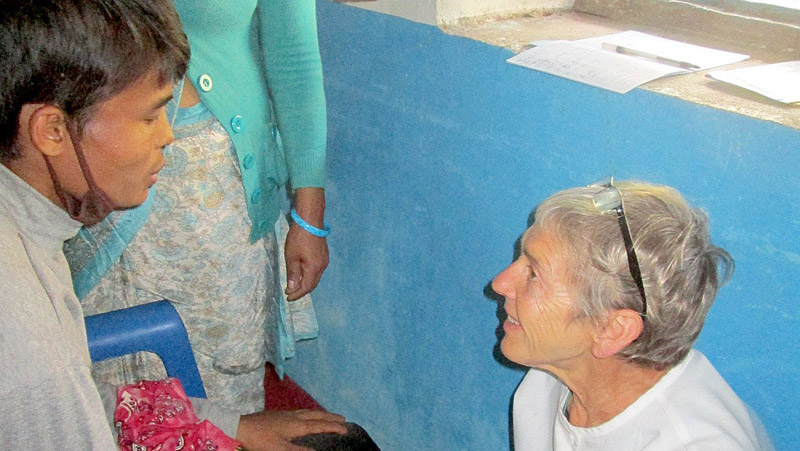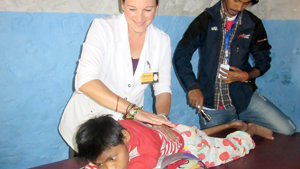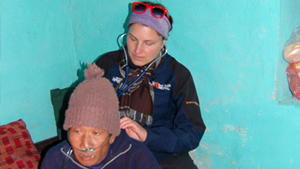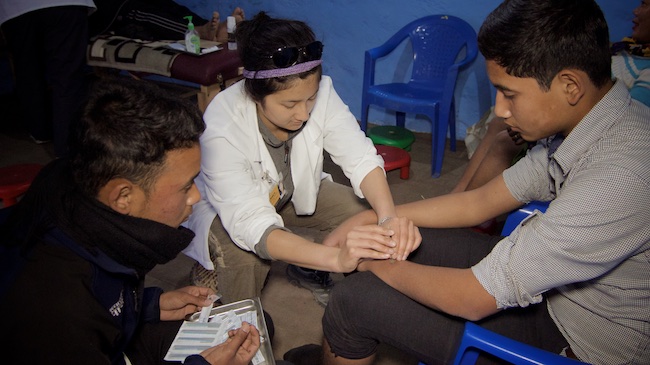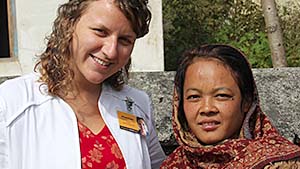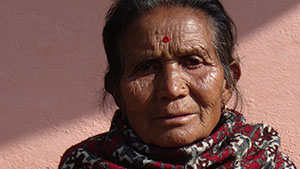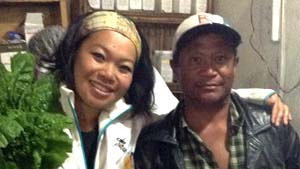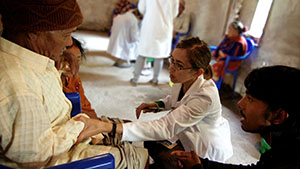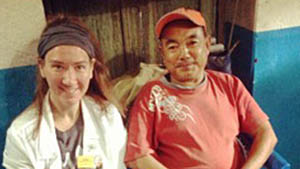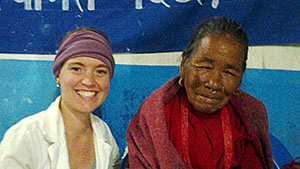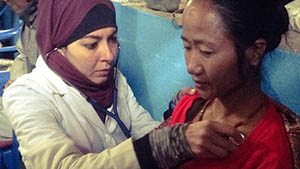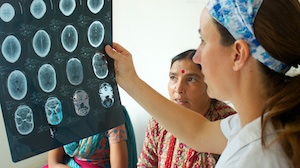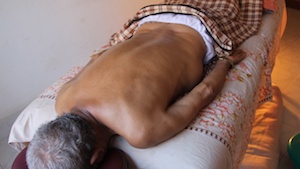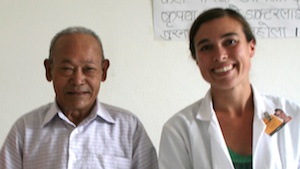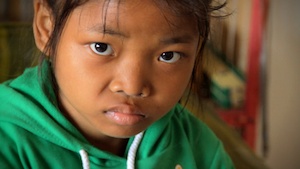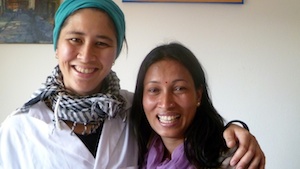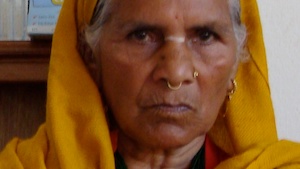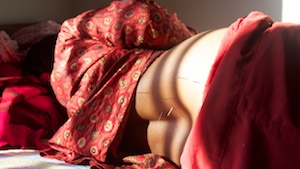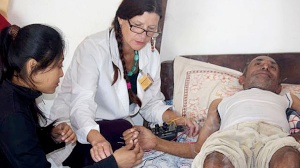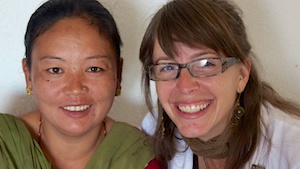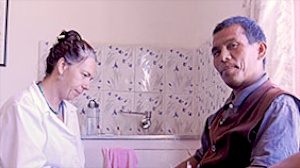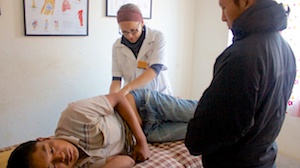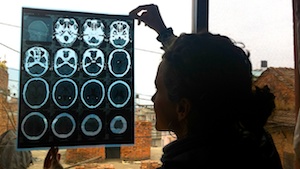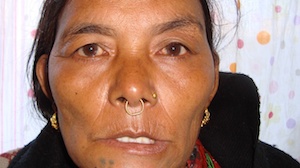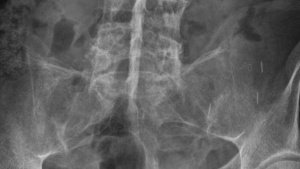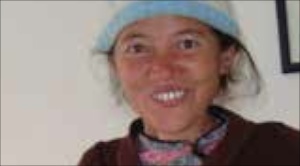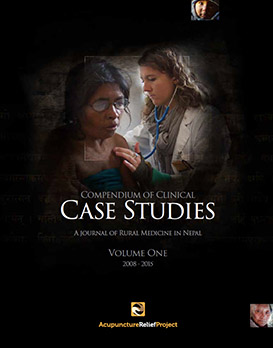Jennifer Walker MAcOM LAc
December 2011
Overview
 35-year-old female presents with left-sided facial twitching and paralysis. After 7 acupuncture treatments, the patient regained over 50% of her facial functioning with 80% of the facial twitching resolved.
35-year-old female presents with left-sided facial twitching and paralysis. After 7 acupuncture treatments, the patient regained over 50% of her facial functioning with 80% of the facial twitching resolved.
SUBJECTIVE
Patient presents with left-sided facial twitching and paralysis. There is painful twitching with frequent tearing of the left eye. The cheek and mouth also twitch, and feel as if “the face is twisted.” She has moderate pain (5/10) with smiling that interferes with sleep, concentration and in social situations, causing her not to want to interact with others. Nothing makes the pain worse. The quality of the pain is sharp. She reports that the twitching is activated when eating or performing other motions with the mouth. The throat is sore and the patient is having difficulty shouting. Patient reports waking with the condition 15 days prior. She has not received any other treatment or medication for this condition. She walks for about an hour to get to the clinic. There is no prior history of the condition. The patient states that on her side of the bed there is a window with a draft.
OBJECTIVE
 Patient appears to be in good health for her age, cultural background and environment. She has a suppressed demeanor and it is difficult to maintain eye contact with her. She speaks very low and says few words when questioned.
Patient appears to be in good health for her age, cultural background and environment. She has a suppressed demeanor and it is difficult to maintain eye contact with her. She speaks very low and says few words when questioned.
There is no visible facial twitching. Upon cranial nerve exam, cranial nerve v, the trigeminal nerve, shows laxity in the masseter muscle. Cranial nerve vii, the facial nerve, shows difficulty in closing and keeping the left eye closed, pursing lips, baring teeth, flaring the nostril and expanding the cheeks with air while keeping the mouth closed. All sharp/dull sensory tests are negative. All tests are negative for any involvement of the right side of the face.
Pulses are thin and wiry. No visible deviation of the tongue or thick coat.
ASSESSMENT
DX: Facial paralysis (Bell’s palsy) Restricted or impaired control and functioning found in the cranial nerve exam shows motor impairment of the following muscles: orbicular oculi (closes eyelids), levator labii superioris alaeque nasir + alar part of nasalis (flair nostrils), buccinator + orbicularis oris (puff out cheeks with air while pursing lips), risorius plus levator labii superioris + depressor labii inferioris (bare teeth). Based on the cranial nerve exam, the facial nerve is predominantly affected, leading to the diagnosis of Bell’s palsy.
TCM DX: LR wind rising due to LR blood deficiency
PROGNOSIS: Because the patient is starting treatment in the acute stage, a full recovery is expected.
INITIAL PLAN
Treat with acupuncture 3-5 times per week for 10 treatments before reassessing. Focus on nourishing and building LR blood and eliminating LR wind. Use needles on the face to stimulate the multiple affected muscles. Internally, use Dang Gui San 1tsp TID to tonify blood.
Typical treatment: Bilateral: ST36, LI4, LI10, LR3, LR8, Yin Tong, GB20; Left: 1 needle threaded from the midline just below the lower lip up to the left corner of the mouth, TW17, SI19, LI19, LI20, GB1, ST3, ST4, ST5, ST6, ST7, CV24, Jia Cheng Jiang; All needles with strong stimulation
OUTCOME
After 6 treatments, the patient reported 1/3rd improvement in the condition. The facial twitching was reduced and no longer visible after needles were inserted. The left eye closed without any difficulty and there was no longer any tearing of the eye during treatment. The patient reported no longer having a sore throat or difficulty shouting. There was no longer any laxity in the masseter muscle. Cranial nerve testing still showed some difficulty smiling, baring teeth and puffing out cheeks with lips pursed. Visually, the patient could perform these tasks at least 50% better than during the first treatment. The patient was able to make eye contact and be much more engaged during treatment.
CONCLUSION
With continued care, it is possible that this patient can expect to see a complete recovery. Her condition has already responded favorably to acupuncture and herbal treatment. During the last visit, the patient was asked to start coming in for treatment every other day for 2 weeks to determine how much progress can be made during this time. She was also counseled to move her bed to an area of the house where there are fewer windows and no draft. In addition, her herbs will be increased to 2tsp of Dang Gui San TID.












